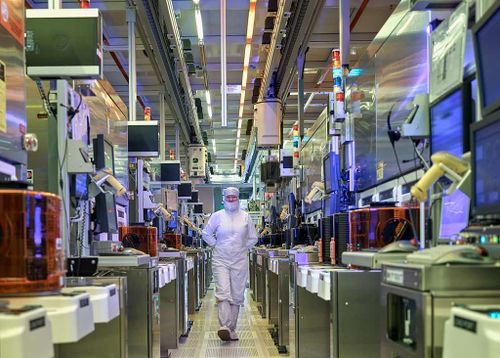You can read countless articles and blogs by VCs, lawyers and investment bankers who have tried to explain the sudden appearance of an ever-increasing number of Unicorns. What is a Unicorn? A seeming contradiction in terms: a private (frequently a startup) company valued at over a billion dollars. How is it that investors award valuations of these companies that defy logic, that represent nonsensical multiples of future revenues? And how pliable are the business news outlets that accept and relay the valuation they are told by their sources. Where is the backup to explain how these valuations are calculated? What are the underlying assumptions?
For several years I have been a guest lecturer at George Washington University’s Graduate School of Business. The professor who developed the course brought in people with real world financial experience. One of the most popular topics that I spoke to the classes was on Unicorn valuations. I would start my lecture with the following statement, “At the end of my presentation, you will be more knowledgeable on this topic then any of the business news pundits you see on TV speaking about a recent billion dollar plus valuation achieved by the latest Unicorn.”
Let’s start with one immutable fact – all investors believe that the investment they are making will increase in value commensurate with the risk/reward of the opportunity. If someone invests $10 today, then they believe it will be worth $20, $50 or more over some defined period of time. Sometimes these investments don’t work out and money is lost. But the investor has done some financial analysis that has justified the price he is paying. He has judged it a good risk-adjusted bet that will achieve an appropriate return.
We are all used to hearing an announcement on the business news that some public company achieved a new record high in the stock market OR missed its quarterly earnings expectations and lost 20% of its value. Public company valuations are easy to understand. There is a closing price in the stock market and a known number of shares owned by its shareholders. You take the last stock price multiplied by the number of shares which equals the equity value of the company. For actively traded companies, this is an accurate representation of what the company is worth since any shareholder could sell his shares for that price thereby receiving a percentage piece of that valuation.
But private company valuations (especially VC-backed companies with multiple classes of preferred stock) cannot be compared to public market valuations. Their complex capital structures are not the same and therefore the math used for public companies with one class of common stock cannot be applied blindly to private companies. And yet that is precisely what the talking heads on the business news would do. An announcement of a new $100 million investment that would nominally be worth 10% of the total shares (on a fully-diluted basis) would appear in the news. Using the public company methodology, this results in an implied Unicorn valuation of $1 billion. The myth that is perpetrated by this over-simplification is that the other 90% of the shareholders hold stock worth $900 million, which is not true.
Most VC-backed companies (certainly the ones that achieve Unicorn status) have multiple rounds of preferred stock that have been the source of capital to grow the business following the founders and early seed-stage investors. The “preferred” in preferred stock stems from the preferences that it has over prior rounds of capital, particularly the original common stock. There are many preferences including dividends, voting rights, board representation and the like. The most significant preference is the liquidation preference which essentially provides for the most recent preferred investor to get its money back (or a multiple of its investment) FIRST before distributions to other investors. This would mean that a Series D investor would receive its liquidation preference first, then the Series C would receive its liquidation preference next, followed by the B, A and Common Stock.
If after paying the Series D, C and B their respective proceeds in the liquidation event, there is nothing left for the Series A or Common Stock, was the price paid by the Series D times ALL shares the true valuation at the time? If in the example of $100 million for nominally 10% of the ownership, there was also a 3x liquidation preference assuring the $100 million a return of $300 million, the investor of the $100 million gets the same $300 million regardless of whether the liquidation event is $3 billion (10% equals $300 million) or $750 million. In the $750 million case after $300 million is paid to the Series D, this leaves $450 million to be split among the 90% remaining shareholders. These Unicorn financings on which we ballyhoo the implied valuations are actually “structured return financings” for the preferred Unicorn investor, with little assurance that a common shareholder owns something that is itself worth its portion of a billion dollars.
A highly public example of the consequences of believing the myth occurred in 2014 with Good Technology. Essentially Good Technology had achieved Unicorn status but then did not execute on the business plan as expected. After stumbling, the business was sold for $425 million, less than half of its once lofty $1.1 billion valuation. Based on the preferred stock terms, the VCs who owned the preferred stock were paid out their liquidation preference ahead of other shareholders resulting in the common shareholders (mostly founders and employees) receiving one-seventh per share of what the VCs were paid for each of their shares.
Another situation is playing out with SoftBank’s proposed two-part transaction to buy between 14% and 20% of Uber, investing up to $10 billion by paying one price to the company for new shares and a lower one to existing shareholders for their previously purchased shares. The Wall Street Journal reports that the deal to buy out certain investors would be at “around $50 billion, roughly 25% lower than the value set in Uber’s last funding round in June 2016.” The author also suggests that the new shares will be sold by the company at the previous $68 billion valuation. The article suggests that “[s]uch a discount is customary in so-called secondary share sales because the stock cannot be resold easily and the shares usually have fewer preferences—such as protections if the company’s value falls—than those purchased directly from the company.”
Actually, the writer missed the point (in my opinion). The shares that Softbank buys from existing investors WERE purchased from the company and have their own liquidation preferences that kick in after any protections for new investors are covered. So, the older preferred shares they are purchasing from existing shareholders may have less liquidation value but not none. I believe that SoftBank’s risk-adjusted math would hold that buying a new share at the $68 billion valuation, could be equivalent to buying an older share at the $50 billion with its liquidation preference established at the time those shares were first sold.
Unfortunately, there is limited public disclosure to see these liquidation preferences in private companies. These are private transactions between the company raising the capital and the investor. Unlike a public company’s common shareholders, not all private company shareholders are the same. Applying the last round valuation across all shareholders is a false equivalency that suggests that all shareholders participate pro rata.
Bradford Harries is a partner of Chessiecap Securities, a FINRA registered broker-dealer that provides investment banking services including capital raising, M&A and other corporate finance services. He is a graduate of Stanford University with an AB in Economics and MBA. His Wall Street career began in 1979 and has particular expertise with respect to technology and emerging growth industries.










